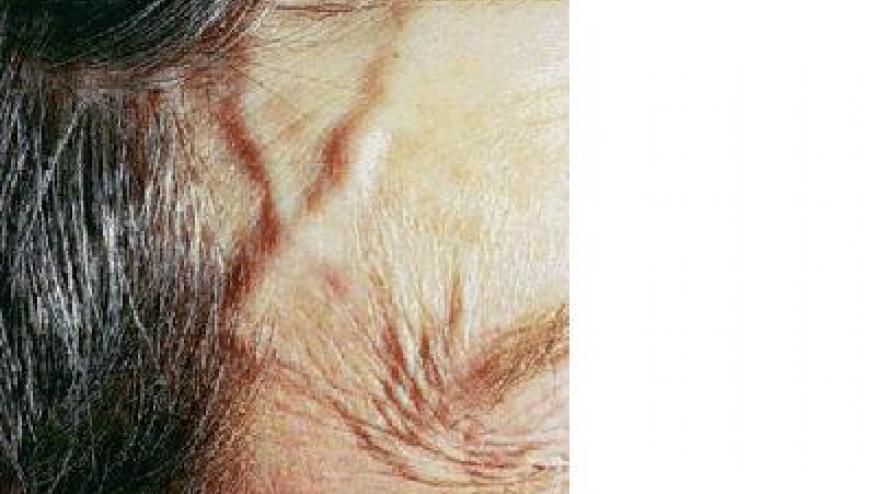Aging Mechanisms Tied to Giant Cell Arteritis Save

Senescence pathways are involved in giant cell arteritis (GCA), an analysis of patient tissue samples suggested, which may account for the efficacy of one agent now used for the disease and another in commercial development.
Temporal artery biopsy samples from GCA patients showed heightened expression of p16 and p21 proteins, both considered drivers of cellular senescence, relative to age-matched controls, according to William Jiemy, PhD, of the University of Groningen in the Netherlands, and colleagues.
Previous research had established that these pathways promote cellular aging, as evidenced by shortened telomeres and reductions in normal activity.
Furthermore, the researchers reported in Arthritis & Rheumatology, the biopsy samples also showed increased expression of interleukin-6 (IL-6) and granulocyte-macrophage colony-stimulating factor (GM-CSF), both of which are known products of the senescence pathways -- and which also happen to be known targets for GCA therapy.
IL-6 is inhibited by tocilizumab (Actemra), which gained FDA approval in 2017opens in a new tab or window for treating GCA. Kiniksa is developing a drug called mavrilimumab that binds the GM-CSF receptor to block its activation; a phase II study published last year found it was more effective than placeboopens in a new tab or window when combined with standard corticosteroid therapy.
That cellular aging may drive GCA isn't entirely surprising. As Jiemy and colleagues pointed out, nearly all GCA patients are older than 50 (in the trial underpinning tocilizumab's GCA approvalopens in a new tab or window, participants' mean age was nearly 70), thus suggesting a role for senescence mechanisms in creating vulnerability, if not the disease itself.
Jiemy's group sought to look for clear evidence that aging pathways were involved in GCA, either in the vasculature or in immune/inflammatory processes. "Cellular senescence has not been properly addressed [previously] in GCA lesions," they noted.
For the current study, the researchers obtained temporal artery biopsies from eight GCA patients (median age 65, nearly all older than 60) and 14 age-matched individuals with vascular disease ultimately determined not to be GCA or polymyalgia rheumatica. Samples were taken either before steroid therapy began or within 10 days of initiation. Levels of p16, p21, IL-6, and GM-CSF in the samples were measured via immunohistochemical staining. Immunofluorescence was used to confirm presence of IL-6 and GM-CSF, along with other senescence pathway products.
"The percentage of positive cells expressing p16, p21, IL-6 and GM-CSF was significantly higher in inflamed [samples] compared to non-inflamed [samples]," Jiemy and colleagues wrote. "This was true for the whole tissue section, as well as in each of the three artery layers."
Also, "myeloid derived cells" including macrophages and giant cells were the "major inflammatory infiltrating cells expressing p16 and p21," the group reported.
In part because of the small number of study participants, and that the biopsy samples also contained giant cells that did not express the senescence markers, the investigators sounded a note of caution about their results. "Further studies are required to definitively prove that senescent cells are present in GCA lesions. As [senescence-related] cytokines can also reflect activation of cells through inflammatory signalling cascades, one important step will be the identification of true senescent cells," the group wrote.
But if confirmed, the research could open up new approaches to treatment, Jiemy and colleagues argued, including drugs to "selectively eliminate senescent cells" or that block cytokine secretion.









If you are a health practitioner, you may Login/Register to comment.
Due to the nature of these comment forums, only health practitioners are allowed to comment at this time.